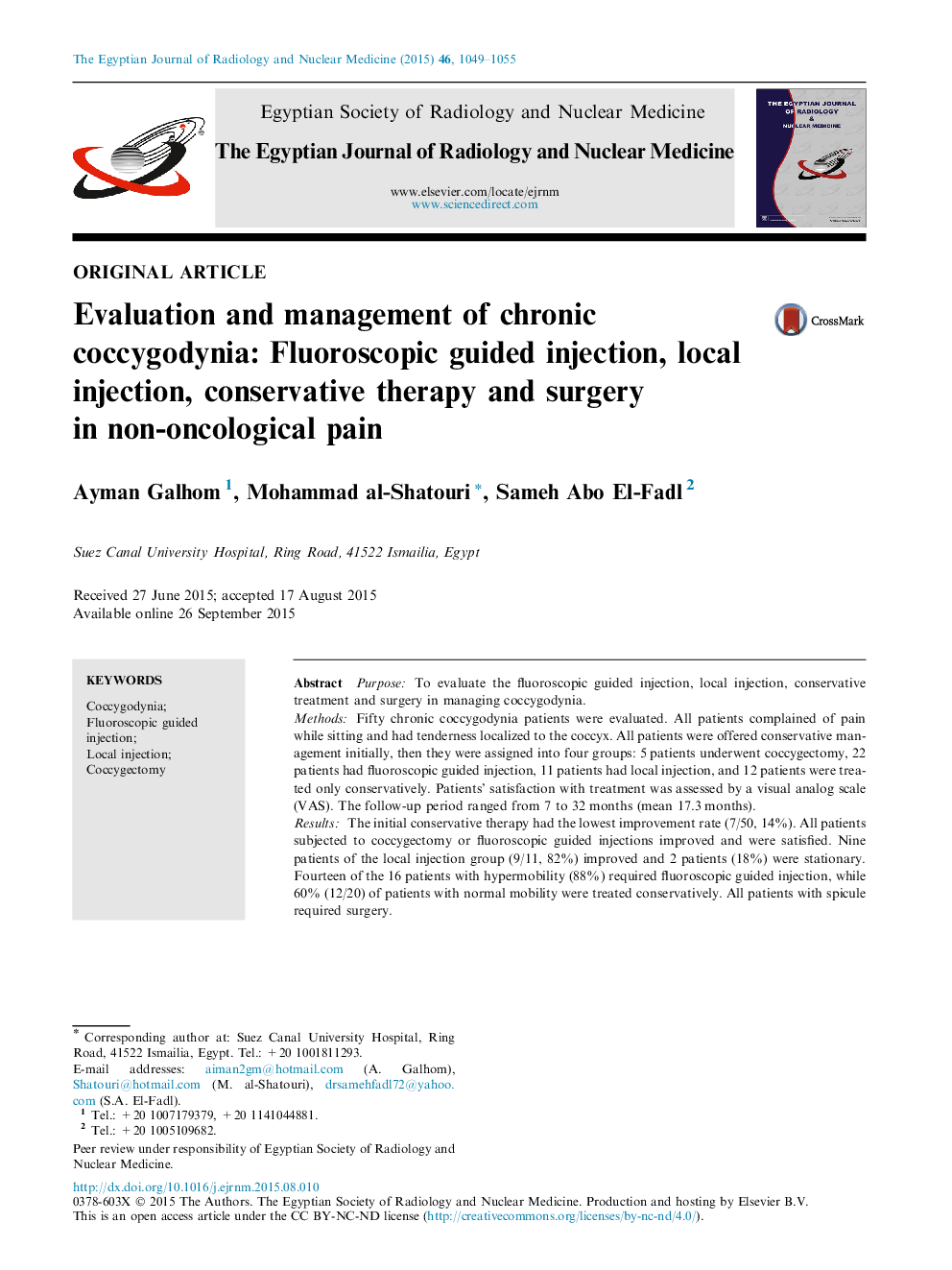| Article ID | Journal | Published Year | Pages | File Type |
|---|---|---|---|---|
| 4224474 | The Egyptian Journal of Radiology and Nuclear Medicine | 2015 | 7 Pages |
PurposeTo evaluate the fluoroscopic guided injection, local injection, conservative treatment and surgery in managing coccygodynia.MethodsFifty chronic coccygodynia patients were evaluated. All patients complained of pain while sitting and had tenderness localized to the coccyx. All patients were offered conservative management initially, then they were assigned into four groups: 5 patients underwent coccygectomy, 22 patients had fluoroscopic guided injection, 11 patients had local injection, and 12 patients were treated only conservatively. Patients’ satisfaction with treatment was assessed by a visual analog scale (VAS). The follow-up period ranged from 7 to 32 months (mean 17.3 months).ResultsThe initial conservative therapy had the lowest improvement rate (7/50, 14%). All patients subjected to coccygectomy or fluoroscopic guided injections improved and were satisfied. Nine patients of the local injection group (9/11, 82%) improved and 2 patients (18%) were stationary. Fourteen of the 16 patients with hypermobility (88%) required fluoroscopic guided injection, while 60% (12/20) of patients with normal mobility were treated conservatively. All patients with spicule required surgery.ConclusionsFluoroscopic guided injection and surgery have the highest efficacy and satisfaction rates in managing chronic coccygodynia. Hypermobility and spicules are predictors of failure of conservative therapy.
